1st round of voting of the 5th “Nan Yue Cup” design competition ended in a satisfactory way
2017-09-02
扫一扫,关注我们
发布时间:2017-09-02来源:222作者:333
In order to track the industry hotspot, activate the technical personnel's innovation vigor, and further promote the construction of "research-based" planning institute, our institute launched the 5th "Nan Yue Cup" design competition in April, 2017. The theme of this activity was "characteristic villages and towns design" and "healthy and active block design". Each design department made positive response to the competition, and a total of 17 contest entries were received from 10 departments, namely, Planning I, Planning II, Planning III, Planning IV, Planning V, Planning VI, Urban Design Institute, Architecture Institute, Policy Research Center, Landscape Studio.
In order to track the industry hotspot, activate the technical personnel's innovation vigor, and further promote the construction of "research-based" planning institute, our institute launched the 5th "Nan Yue Cup" design competition in April, 2017. The theme of this activity was "characteristic villages and towns design" and "healthy and active block design". Each design department made positive response to the competition, and a total of 17 contest entries were received from 10 departments, namely, Planning I, Planning II, Planning III, Planning IV, Planning V, Planning VI, Urban Design Institute, Architecture Institute, Policy Research Center, Landscape Studio.
On June 15-16, the chief-engineer office organized the first round of the voting activity. According to the voting rules, voted by the technology committee members, 7 teams entered into the second round of design competition, of which there are 3 teams for "characteristic villages and towns design", and 4 teams for "healthy and active block design".
The technical committee gave high evaluation of the competition, and believed that the competing teams had made adequate preparation, and had strong innovation consciousness, and the competition had achieved the desired effect. The technical committee also expected the 7 teams entering the second round of competition could continue to work hard, focus on the theme, deepen the scheme, and create achievement in the second round again. The teams failing to enter the second round were encouraged to keep the enthusiasm of innovation, and make summary and develop it to paper and submit it to related BBS and magazine.
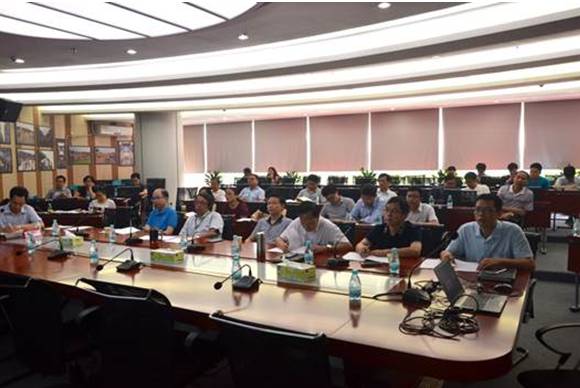
The judges are hearing reports.
Table: voting results of the 5th "Nan Yue Cup" design competition
|
Theme |
Team No. |
Subject |
Participants |
Combination situation |
|
|
Leading department |
Cooperative unit/department |
||||
|
|
03 |
2.0 version village planning layout for the new generation of peasants——reconstruction of rural life and development mode |
Li Yanpeng, Zhang Xuechen, Yang Liu |
Planning V |
Urban Institute |
|
|
07 |
From planning, implementation to self-management- integrated design of village planning and construction |
Li Jian, Luo Yanfei, Tang Aiyin |
Planning III |
Planning VI |
|
|
05 |
Shared space design path of characteristic town |
Li Jianxue, Liang Chuxin, Liang Min |
Planning II |
Zhongshan University |
|
|
04 |
Disease preventive treatment health block evaluation and design
|
Li Ying, He Long, Lv Jia |
Planning IV |
Architecture Institute, Traditional Chinese Medicine Hospital of Guangdong Province |
|
|
02 |
Urban calories: sports health block design – take Guangzhou as an example |
Wu Yisi, Xu Zhen, Guo Wenbo
|
Planning V |
Oxford University |
|
|
10 |
Dynamic space construction - temporary public space use policy |
Wang Fei, Wang Yulin, Hu Xiumei |
Planning III |
Planning VI |
|
|
06 |
Large linear gray infrastructure design strategy - take urban ring road as an example |
Fu Jing, Xuan Weiyang, Chen Yaoyang |
Planning II |
Architecture Institute |
Note: The order of above list is according to the poll from high to low.
Introduction to some participating subjects:
Version 2.0 village planning layout for the new generation of peasants
——reconstruction of rural life and development mode
Through the analysis of historical context and current problems of rural China, the participating team put forward that it was required to provide a variety of jobs and the public service level of similar city to attract the new generation of farmers to return to rural production and living, and then put forward the diversified employment forms of villages and the layout mode of neighbourhood villages. They selected the neighbourhood villages via DPA potential analysis, put forward the different types and layout modes of neighbourhood villages, such as ecological livable type, rural community type, industry implantable and etc, as well as the layout form of village settlements alliance, and preliminarily put forward version 2.0 village layout form.
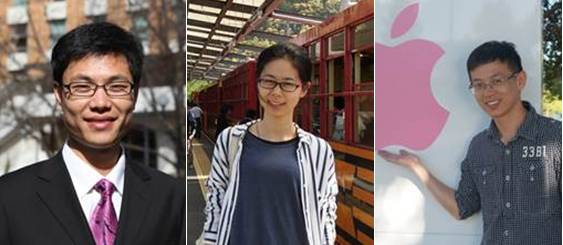
Li Yanpeng, Zhang Xuechen, Yang Liu (from left to right)
From planning, implementation to self-management
——integrated design of village planning and construction
In the past seven years, the competing team participated in various types of village planning of about 200 villages in Guangzhou and Guizhou, and project types included: beautiful countryside planning, traditional village protection and development planning, famous villages and towns protection planning, livable action planning, happy village planning, poverty alleviation, famous tourism village planning, and etc. Based on the experience above, it raised the thinking about the implementation of village planning and construction. Based on Ostrom's theory of common-pool resources, they put forward that it was essential to focus on villagers, and make integrated design from planning, implementation to self-management during village planning and construction. During planning, combine space implementation with villagers demand. In the process of construction, emphasize on planning adjustment and supervision mechanism, extend the planning process chain, guide the results to be reached; introduce the supervision mechanism, and ensure the implementation of results. In the later maintenance, it is necessary to develop the punishment mechanism and the coordination mechanism of village council. Meanwhile, it is also necessary to develop punishment mechanism and system construction in government level, and the village council should carry out coordination and guidance work well.

Li Jian, Luo Yanfei, Tang Aiyin (from left to right)
Shared space design path of characteristic town
The competing team pointed out that shared space was the characteristic carrier of "characteristic town", which reflected the space demand of industry development and City-Industry Integration. Around the goal of " exploring the characteristics and design pattern of characteristic town’s shared space, and providing the platform to improve the space quality and public design path", they discussed the definition, users, behavioral requirements, site selection, form and other issues of shared space of characteristic town, put forward the "multi-functional, convenient, normalized, flexible, landscape, comfortable" characteristics and related design methods of shared space of characteristic town, and provided the preliminary design thought about organizing the overall planning and construction of characteristic town with shared space.
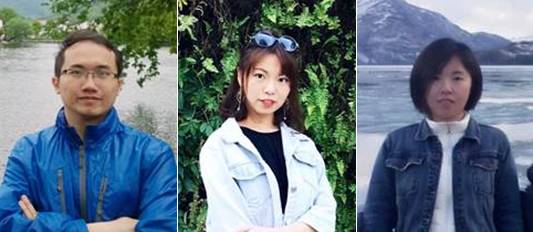
Li Jianxue, Liang Chuxin, Zhou Min (from left to right)
Disease preventive treatment health block evaluation and design
Aiming at the serious urban ageing problem of the current society, the competing team preliminarily established the relationship between health risks and built environment from the three aspects of basic health care, healthy psychological behavior guidance and health psychology promotion by taking the aged as an example, and put forward the built environment evaluation index and evaluation method for the health of elderly. At the same time, they also carried out assessment and application of the related index of built environment for Haizhu District, made relationship validation of assessment system in combination with field survey, and proposed the space design direction, so as to lay a foundation for making space design strategy for health block suitable for the aged, and promoting the health block evaluation system of different groups of people in the next stage, thus promoting the integration of urban planning, pathology and public health.
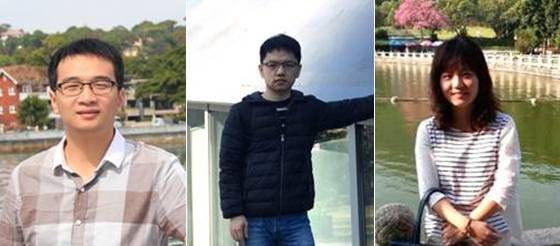
Li Ying, He Long, Lv Jia (from left to right)
Urban calories: sports health block design
—— take Guangzhou as an example
The competing team defined the sports and health block as the one having the basic qualities, such as energy, health and etc, and emphasizing on active participation. Based on the train of thought of definition - recognition - deconstruction – integration - application, and in combination with the spatial perception system and DAD data enhancement design and other methods, we excavated the construction path of health block, and linked the relationship between residents and urban space.
Through the spatial distribution data of sport facilities, and in combination with GIS analysis and the demand of people in different blocks, we put forward the train of thought from demand to space: 1. Quantify the difference distribution mode through people demand analysis. 2. Equally treat the linear space and point, planar space, and consider how to implement interaction on the layout. 3. Improve the stock sport space quality, and solve the problem of low sport space utilization efficiency.
In the next stage, the design will introduce public participation by the use of multivariate data superposition, and combine with more cities for comparative study. Explore quantitative index and differentiated demand model, solve the actual planning problem of sport space scale, distribution and combination, and apply to the specific planning practice.
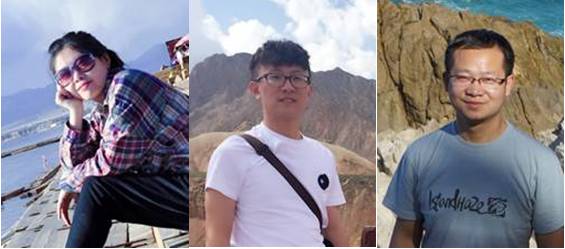
Wu Yisi, Xu Zhen, Guo Wenbo (from left to right)
Dynamic space construction
—— temporary public space use policy
The competing team believed that public space was an important factor to decide whether a block was energetic, and temporality was an amplifier for public space vitality. In daily life, we have encountered many cases about temporary occupation of public space, such as the roadside night market, square dance, spring festival flower fair, and etc, and this kind of space is usually very viable. However, this kind of phenomenon is not allowed usually, and there is no attention paid to this kind of temporary public space in the traditional planning and design. Through field investigation and case study at home and abroad, the review of relevant laws, regulations and policies, as well as the interview and interaction of related personnel, the competing team had a comprehensive understanding about the status quo of the use and management of temporary public space, and found that, there was a large use demand for temporary public space on the one hand, and there was urban public space (negative/positive) supply on the other hand. The team tried to match the both from two levels, namely the laws and regulations (system) management and space planning and design, and actively advocated the use of temporary public space, so as to make the city more energetic.
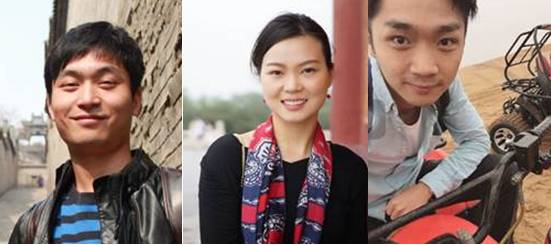
Wang fei, Hu Xiumei, Jiang Yulin (from left to right)
Large linear gray infrastructure design strategy
—— take urban ring road as an example
The competing team interpreted the “healthy and active block” from the perspective of large linear gray infrastructure, took urban ring road as the research object, and took interpersonal activities as the core. For the characteristics of grey infrastructure in the past, such as single function design, only technical requirement consideration and etc, and a series of problems highlighted currently, we hoped to combine it with urban open space from the perspective of identifying the potential transformation space in combination with function restructuring, traffic reorganization, ecological mending and other design strategies, raise the vitality, reactivate the social, aesthetic, and ecological functions it should have, provide more public space and activity places, and make the people participate, and reshape the overall contribution of infrastructure to the city.
The design value included three points: 1. change the development value logic of urban ring road and other grey infrastructure, and return to people first from serving the production; 2. provide a kind of transformation idea the transformation and redevelopment of large linear gray infrastructure; 3. act as a gripper of the implementation of ecological restoration and urban repair.
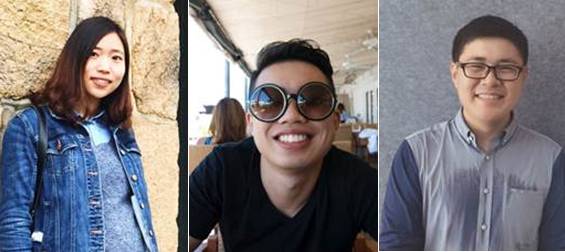
Fu Jing, Chen Yaoyang, Yi Weiyang (from left to right)
Congratulations on Chief Engineer Ma Xiangming of Our Institute Obtaining the State Council Special Allowance
Leadership of the institute actively participated in the supervision and guidance of the protection, activation and utilization of the ancient post roads in Guangdong and Jiangxi Provinces
The First Round of Selection of the 6th "Southern Guangdong Cup" Design Competition was Successfully Concluded
The institute was invited to attend the academic round table conference on "Guangzhou New Observation" village revitalization and the ancient post roads in Southern Guangdong
A special lecture by Zhu Hairen, Dean of Guangzhou Institute of Cultural Relics and Archaeology invited by the institute
Seminar on strengthening knowledge management and promoting enterprise intelligence development in the design industry jointly organized by the institute